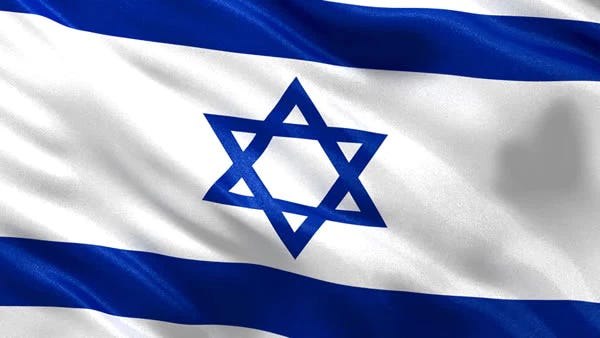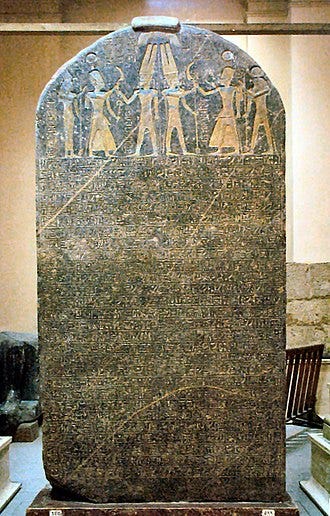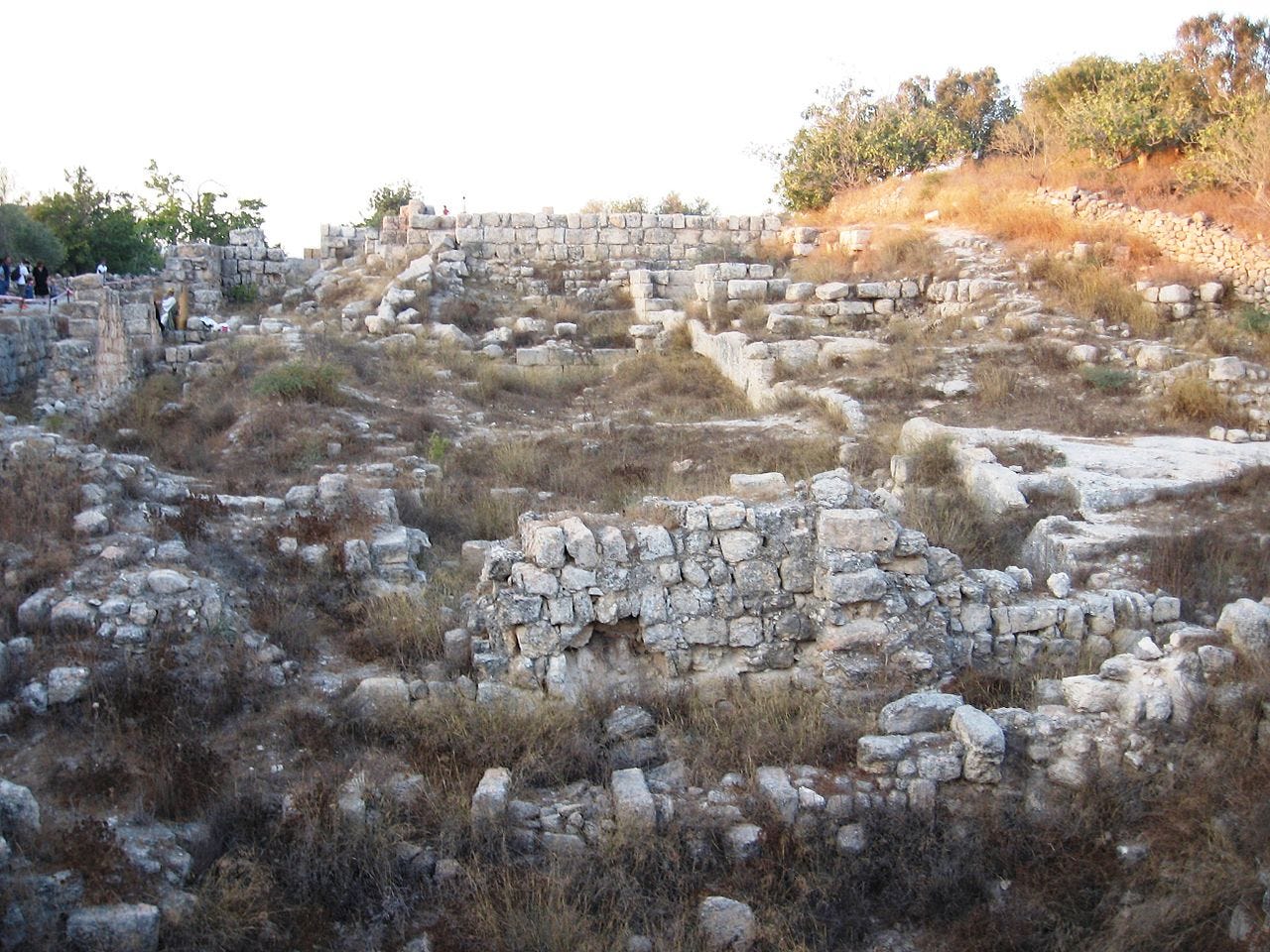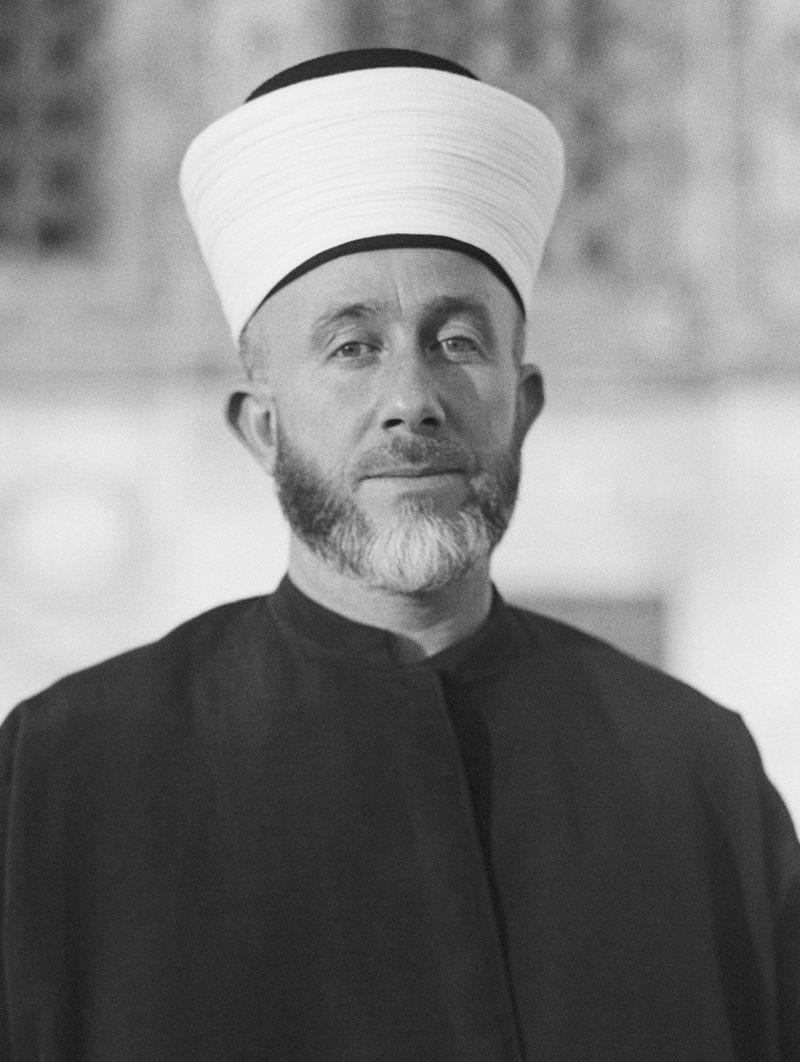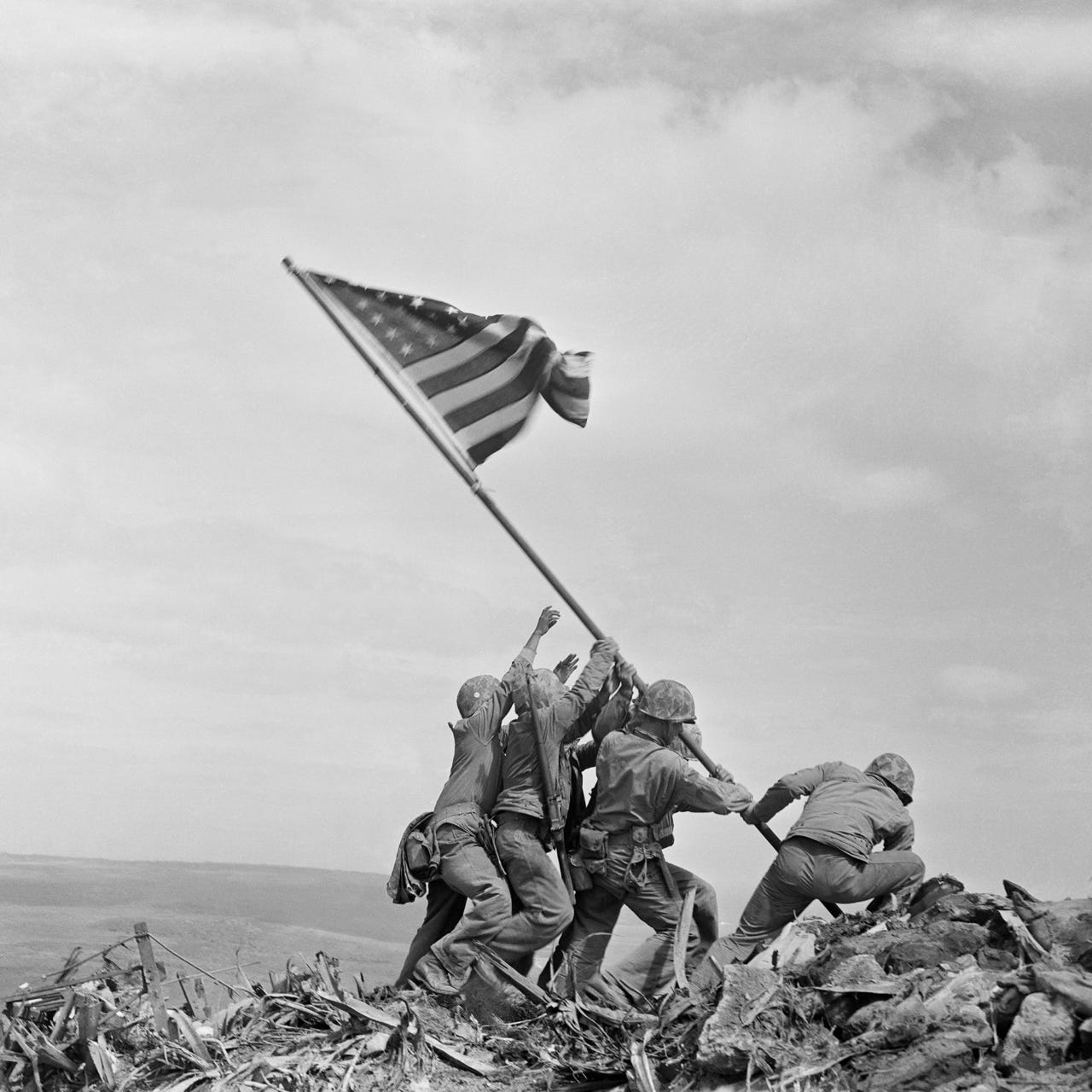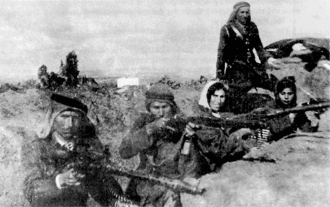A Reposting of A Short History of Israel Part I
The truth of the real history of the Arab-Israeli conflict must be known.
I’m interrupting our regularly scheduled program for this breaking news story!
I’m reposting the first few part of my Short History of Israel series, which have been reedited, and a few additional comments added. I want to make sure that everyone knows the real history of Israel and the Arabs. What we have seen over the last week an a half is sickening, both the barbaric attack by the terrorist group Hamas, and the response to it in the West. I am horrified at the images coming out of Israel and even more horrified by the images from around the world. I would expect anti-Israel demonstrations in Iran, Saudi Arabia, Yemen or Afghanistan but not in America, France or Australia. It is unfortunate, but the Arabs in Gaza will now have to reap what Hamas has sown. I will not be overly critical of Israel for their actions against Hamas, as I believe that any country has the right to defend itself from attack. I proudly stand with Israel!
Chris
October 18, 2023
Israel and the Jewish people have a long and tumultuous history, and even though I’m not Jewish, I consider myself, as much as I can be, a Zionist. If there are any people in the world that deserve a home to call their own, it is the Jewish people. Oppressed around the world and throughout history. Expelled and barred from England (1290 to 1657), Austria (1420-1429), Spain (1492 to 1868) all French colonies ( 1683), Russia, twice (1793 & 1880 to 1910), the Soviet Union (1936-1953), North African and Middle East countries (1948-1972) and many other instances throughout history. Then systematically exterminated by the millions in the Holocaust. They have been discriminated against and hated around the world for a litany of lies and stereotypes. Anti-Semitism might actually be the one thing that people around the world have in common.
In the modern world there is still rampant Anti-Semitism as we have seen this eleven days. Since the end of World War I the issue of the return of Jews to their ancestral homeland has been complicated by a decision made by the Roman Empire almost 1,900 years ago as well as British bungling and mismanagement. With just a little research everyone would learn that the terms made up by the Romans don’t actually reflect a real place or people. Every time someone in the media, academia, politics or the so called “Elites” mentions the word Palestine or Palestinian, it sticks in my craw. The Arabs living in Judea did not even have a single group to act on their behalf until 1946 with the establishment of the Higher Arab Executive Committee (please note that it is the Arab committee not the Palestinian committee) and Arabs in the region did not even view or refer to themselves as “Palestinian” until after the Six Day War.
The concept of Palestine and the “Palestinian problem” have haunted the world and led to the deaths of millions of Jews and Arabs since the mid-twentieth century. This problem will continue to hang over the world until people stop using the terms and call the land what it is, Israel. In “Elite” circles, Israel is spoken of as an apartheid state, and the Boycott, Divest and Sanction (BDS) movement is widespread on college campuses and even in corporate America. The idea that a country with a population of over 1.7 million Muslim citizens, with full and complete rights, is an apartheid state is laughable. Among the 18.1% of Israelis citizens that are Muslim, there are judges, diplomats, Israeli Defense Forces (IDF) generals and members of the Knesset (currently there are eleven Muslim Knesset members). The Muslim citizens of Israel are in no way, shape or form, second class citizens. If the American “Elite” pulled their heads out of their asses and actually looked at what is happening on the ground in Israel it would be one more step to solving this problem.
The History:
Let’s start with a little timeline to establish some facts. The first non-biblical mention of Israel is found on the Victory Stele of the Pharaoh Merneptah, discovered in Thebes in 1896 by the English Egyptologist Flinders Petrie. It was carved in 1208 BC and chronicles Merneptah's victories over his enemies from Libya, but the final few lines mention a campaign in Canaan, where Merneptah destroyed his enemies to the east, it reads:
The Canaan has been plundered into every sort of woe:
Ashkelon has been overcome;
Gezer has been captured;
Yano’am is made non-existent.
Israel is laid waste and his seed is not.
In the Book of Kings, the Old Testament speaks about the break up of Israel. After the death of King Solomon, his son and successor, Rehoboam, refused to repeal large taxes that had been imposed by Solomon. Ten tribes broke away from Israel, elected Jeroboam their king and set up a state in the northern areas of Israel. That kingdom retained the name Israel and the southern kingdom, still ruled by Rehoboam, was called Judea. In 720 BC Israel was conquered by the Assyrians under Shalmanezer, carried away into exile and never heard from again. They became known as "the ten lost tribes” and what had been known as Israel became Samaria. However, Judea still existed and Jews still lived there.
The first reference to a place called Palestine was in 450 BC, over 750 years after the Merneptah Stele. The Greek historian Herodotus referred to a "district of Syria, called Palestine” in his book The Histories. The passage did not mention a people called Palestinians, just an area of land called Palestine. The Romans, who conquered the area in 63 BC, called the area Judaea, the Latinized version of Judea, because that was what the locals called it. They used the term Judaea until the the Jewish Expedition, or the Bar Kokhba revolt, as it was known as in Judaea, from 132 to 136 AD.
After the suppression of the revolt, the Emperor Hadrian enacted a series of edicts aimed at uprooting Jewish nationalism in Judaea. He prohibited Torah law and the Hebrew calendar, he executed Judaic scholars and had the Talmud ceremonially burned at the Temple of Jupiter, which had been built on the site of the destroyed Second Temple. Two further, and more lasting punishments were also implemented by the Romans. In an attempt to erase any memory of Judaea or ancient Israel, the name Provincia Judaea was stricken from the records in favor of Provincia Syria Palaestina. This is the only time in the history of the Roman Empire, that a rebellion had ever resulted in a nation's name being expunged from the Roman map. The second punishment was the removal of Jews from what had been Judaea. According to the Jewish historian Josephus, after the fall of Jerusalem 80,000 Jews were sold into slavery and another 30,000 were exiled to far flung regions of the empire. Hadrian also founded a new city encompassing the entirety of Jerusalem, called Aelia Capitolina, into which Jews were forbidden to enter, except on the day of Tisha B’Av (a day of mourning marking the destruction of both Solomon’s Temple and the Second Temple. It falls either in at the end of July or beginning of August). By destroying the association of Jews with Judea and forbidding the practice of the Jewish faith, Hadrian aimed to root out a people that had been a festering wound in the side of the Roman Empire for years. These proclamations remained in effect until Hadrian’s death in 138 AD but the connection between the Jews and their land had been, and would remain broken for centuries.
In the year 390 AD, during the Byzantine period, the imperial province of Syria Palaestina was reorganized into Palaestina Prima, Palaestina Secunda and Palaestina Saltaris. The names of those areas weren’t changed after the Rashidun Caliphate conquered the region in 638 AD. In 1516 the Ottoman Empire captured the area from the Egyptian Mamluks and referred to the area the “Eyalet (primary administrative division) of Damascus” and later Vilayet Syria. The entire Holy Land stayed in Ottoman hands for the next 400 years.
Meanwhile there were developments in Jewish thought that would have long lasting consequences for the Jewish people and the world at large. In the 19th century, a new idea in Jewish thought, supporting a return to Zion (the area of biblical Israel) grew in popularity, particularly in Europe, where antisemitism and hostility toward Jews was growing. The idea of returning to their ancestral homeland was rejected by a conferences of rabbis held in 1846, but individual and small societies supported the emigration of Jews to Palestine. In the 1890s, Theodor Herzl infused Zionism with a new urgency, leading to the First Zionist Congress, held in Basel Switzerland in 1897. It was during that conference that the World Zionist Organization (WZO) was created. Herzl's aim was to initiate the necessary preparatory steps for the development of a Jewish state, unfortunately his attempts to reach a political agreement with the Ottoman rulers of Palestine failed. In the meantime the WZO supported small-scale settlement in Palestine and focused on strengthening Jewish feeling and consciousness and, on building a worldwide federation.
During World War I the British wanted to put more pressure on the Central Powers to help their efforts on the Western Front. At the same time the people of the Middle East were tired of their Ottoman rulers. This confluence of events resulted in a series of letters written between the British High Commissioner to Egypt Lieutenant Colonel Sir Henry McMahon and the Sharif of Mecca Hussein bin Ali, which came to be known as the McMahon-Hussein Correspondence. In the letters, Sir Henry promised to recognize Arab independence in exchange for Hussein launching an Arab revolt against Ottoman rule. A secondary reason for the offer was to counteract the Ottoman declaration of jihad against the Allies, and to maintain the support of the 70 million Muslims in British India (particularly those in the Indian Army who had been deployed to all major theaters of the war). In 1916 British and French diplomats Sir Mark Sykes and Francois Georges Picot negotiated the Sykes–Picot Agreement, dividing the Middle East into British and French spheres of influence, a treaty that violated the agreement between McMahon and Hussein. Then on November 2 1917 the United Kingdom’s Foreign Secretary Lord Arthur Balfour sent a letter to one of the leaders of the British Jewish community, Lord Walter Rothschild, a letter which was to be forwarded to the Zionist Federation of Great Britain and Ireland and became known as the Balfour Declaration. The contents of the letter promised British support for a Jewish “national homeland in Palestine but also mentioned that the political and religious rights of the non-Jewish population must be preserved. Once again, going against the agreement between McMahon and Hussein. The British further solidified their hold on the region with a League of Nations mandate arranged during the San Remo Conference of 1920. The region was then known as Mandatory Palestine from 1920 until the mandate expired in 1948.
In the first decade of the Mandate, it quickly became clear that it would not be a harmonious or peaceful place. Arab leadership refused to cooperate with any institution which included Jewish participation, and in 1921 when the Grand Mufti of Jerusalem, Kamil al-Husayni, a moderate willing to work with the British, died, the High Commissioner for the Mandate, Herbert Samuel, appointed Kamil’s half-brother Amin al-Husseini, a virulent anti-Semite and Arab nationalist. A person who would play a key role in the violent opposition to Zionism.
In March and April 1920 incidents occurred in and around Jerusalem that resulted in the deaths of thirteen Jews and nine Arabs. In 1922 Samuel tried to established a Legislative Council, however the effort met with problems from the outset. The council was to consist of 23 members: 12 elected, 10 appointed, and the High Commissioner himself. Of the 12 elected members, eight were to be Muslim Arabs, two Christian Arabs, and two Jews. Arabs protested against the distribution of the seats, arguing that as they constituted 88% of the population, having only 43% of the seats was unfair. Elections took place in February and March 1923, but because of an Arab boycott the results were annulled and a 12-member Arab Higher Committee was appointed by Samuel instead.
Tensions remained high for the next seven years but were held in check by Mandate police until August 15 1929. At that time, with the most of the staff officers of the Mandate at a conference in Egypt, a group of 300 people from the group “Pro–Wailing Wall Committee” marched to the Western Wall shouting "the Wall is ours," raised the Star of David flag and sang the Jewish National Anthem, but other than occasional rude comment shouted at Arab bystanders the march was peaceful. The next day, a demonstration organized by the Arab Higher Committee marched to the Wall. The Acting High Commissioner, Edward Keith-Roach, summoned al-Husseini and informed him that he had never heard of such a demonstration being held at the Wailing Wall, and that it would be a terrible shock to the Jews who regarded the Wall as a place of special sanctity to them. Meanwhile at the demonstration, the crowd burnt prayer books, and notes of supplication left in the Wall’s cracks. The next day the disturbances grew worse with widespread violence and the first killings. The Arab newspapers ran commentary like this one from a group calling itself The Committee of the Holy Warriors in Palestine
"Hearts are in tumult because of these barbaric deeds, and the people began to break out in shouts of war, Jihad and rebellion. O Arab nation, the eyes of your brothers in Palestine are upon you, and they awaken your religious feelings and national zealotry to rise up against the enemy who violated the honor of Islam and raped the women and murdered widows and babies."
The violence spread to the Jewish commercial area of town and continued until a massive intervention by British police. The riots resulted in 131 Jews killed and 300 injured as well as 120 Arab deaths and 240 wounded. There were also thousands of pounds in damages to property throughout the Mandate.
The very next year, Sheikh Izz ad-Din al-Qassam arrived from Syria were he had been fighting French Mandate forces. Once in the British Mandate he founded The Black Hand, an anti-British and Anti-Zionist militant organization that grew to a strength of 800 fighters.
On November 20th 1935 after the killing of a British policeman, al-Qassam and some of his followers were surrounded in a cave and al-Qassam was killed. His death generated widespread outrage in the Arab community. A few months later, in April 1936, an Arab national general strike instigated by Amin al-Husseini and the Arab Higher Committee, broke out. This coincided with continued violence directed at both the British and Jewish settlers. In the countryside an armed insurrection that had started sporadically became more organized over time. One particular target of the rebels was the Mosul-Haifa oil pipeline of the Iraq Petroleum Company, it was repeatedly bombed at various points along its length. There were also attacks were on railways, Jewish settlements, Jewish neighborhoods in the cities and individual trains. As well as small groups and individuals Jews. The measures taken by the British against the strike and the rebellion were harsh from the outset and grew harsher as the revolt deepened, including mass arrests, nighttime raids, floggings, violent crackdowns on any demonstrations and deportations and confiscation of property. Meanwhile the British formed the Palestine Royal Commission, led by Lord Peel, which came to known as the Peel Commission, to investigate the ongoing troubles and possible solutions. By June 1936 after appeals from Saudi Arabia, Iraq, Egypt and Transjordan, the strike was called off and the violence abated while the Peel Commission conducted their investigation.
The Peel Commission released its report in May of 1937 stating the League of Nations Mandate had become unworkable and advised partition. It recommended that the Mandate be split into two states with permanent international control for Jerusalem in addition to a corridor stretching to the Mediterranean coast at Jaffa. The Jewish state was to receive a territorially smaller portion in the Midwest and north, from Mount Carmel, south to Be’er Tuvia, as well as the Jezreel Valley and the Galilee. The Arab state, which would be part of a union with Transjordan was to receive territory in the south and mid-east which included Samaria and the Negev desert. It also suggested that because the Jews contribute more per capita to the revenues of Palestine than the Arabs did, the Jewish state should pay a yearly grant to the Arab state, once partition took place. The report stated that if partition is to be effective in promoting a final settlement, it must mean more than drawing a frontier and establishing two States. Sooner or later there would have to be a transfer of land and, as far as possible, an exchange of populations. The population exchange, would involve the transfer of up to 225,000 Arabs and 1,250 Jews.

The report was immediately rejected by the Arabs, their objections were accompanied by a proposal that Britain adhere to its promise of a sovereign Arab democratic state with “constitutional guarantees” for the rights of the Jewish minority. The plan was also repudiated at the Bloudan Conference convened in Syria on September 8th, where parties from all over the Arab world rejected both the concept of partition and the establishment of a Jewish state in the Mandate. A statement issued by the conference also claimed that all of Palestine belonged, in perpetuity, to the Arabs. In 1937, the US Consul General in Jerusalem reported to the State Department that Amin al-Husseini rejected, even the principle of partition and declined to even consider it. The Consul said Transjordan’s King Abdullah urged Husseini to accept the proposal on the grounds that realities must be faced, but Husseini, who according to his biographer was an "authoritarian who could not tolerate opposition", feared the recommended merger with Transjordan would strip him of any real power in the region.
On August 20th 1937, the Twentieth Zionist Congress passed a resolution stating, that at the time of the Balfour Declaration, it was understood that a Jewish National Home was to be established in the whole of historic Judea, including parts of Transjordan and, that inherent in the Declaration, was the eventual evolution of Palestine into a Jewish State. David Ben-Gurion, chairman of the executive committee of the Jewish Agency for Palestine, and Chaim Weizmann, the two leading Jewish leaders, convinced the Zionist Congress to accept the plan but told them it was only a starting point for further negotiations and that these could be considered temporary boundaries to be expanded in the future. Ben-Gurion saw the plan as only a stage in the realization of a larger Jewish state, he wrote a letter to his son explaining that partition would only be a first step to "possession of the land as a whole”.
In the autumn of 1937, after the Arab rejection of the Peel Commission recommendations the revolt resumed. Unable to contain the protests with the two battalions already stationed in the country, Britain inundated the region with units from all over the empire, including its Egyptian garrison. The British also formed armed Jewish units equipped with armored vehicles to serve as auxiliary police, eventually training over 6,000 Jews. In addition, Charles Orde Wingate, a British, Mandate Intelligence officer, organized the Special Night Squads composed of British soldiers and Jewish volunteers which scored significant successes against the Arab rebels in lower Galilee and the Jezreel valley. Over the next 18 months, these forces, suppressed the widespread riots with overwhelming force. By the end of the year 5,000 Arabs, over 300 Jews, and 262 British soldiers had been killed and at least 15,000 Arabs were wounded.
In February 1939 the British government formed the St. James Palace Conference which met between February 7th and March 17th to plan the end of the Mandate and the future governance of Palestine. Using the Peel Commission recommendations, Colonial Secretary Malcolm MacDonald held a series of meetings with the Arab and Jewish delegations. These were separate meetings, because the Arab delegation refused to even sit in the same room as the Jewish delegation. When MacDonald first announced the proposed conference he made clear that if no agreement was reached Britain would impose a solution. On February 9th, Jamal Husseini, the leader of the Arab delegation, and Executive Secretary of the Arab Higher Commission put forward the Arab position:
Independence
No Jewish national home in Palestine
Replacement of the Mandate by a treaty
End to all Jewish immigration
The Jewish delegation was led by Weizmann and Ben-Gurion, the main points of their official position were:
Jews in Palestine needed, at the minimum, minority status
A continuation of the Mandate
Continuation of Jewish immigration, governed by the capacity of the country to absorb the incomers
Investment to speed up development in Palestine
On May 17th 1939 Colonial Secretary MacDonald made his final proposals, which became known as the White Paper, they included:
A limit to Jewish immigration for five years after which, numbers would be set by an agreement with the Palestinian Arabs
Restrictions on Jews buying land.
Gradual introduction of both Jews and Arabs, into senior administrative posts, in an effort to transition away from the Mandate.
A transfer of all powers to a representative government after ten years
The proposals were conditional on the end of the violence in Palestine. If after ten years, no agreement had been reached about the form of government, the British would reconsider the situation. However on April 17th before the publication of the White Paper, the Histadrut (The Jewish National Trade Union) announced the launch of a campaign against the proposals. On May 17th, to mark the publishing of the White Paper, there were riots in Jerusalem, telephone wires were cut and government offices attacked. Jewish attacks on Arabs and government property continued through the summer with the Jewish underground group Irgun claiming to have killed over 130 people during that period. There was also an increase in illegal immigration, with 6,323 Jews arriving between April and October 1939. Of course, the British would be occupied for the next few years, because of the deteriorating situation in Europe. In fact, Adolf Hitler had occupied Czechoslovakia two days before the beginning of the conference and a world war would start by September. David Ben-Gurion wrote to a friend after the release of the White paper, that British Prime Minister, Neville Chamberlain, personally told Ben-Gurion that the agreement would not outlast the war and although they didn’t know it at the time, the question wouldn’t be if a Jewish state would be created, but how many Jews would be left to immigrate to the Mandate after the war?
I hope you have learned something from this post and will use this opportunity to learn more about the real history of the region. Please share this with as many people as possible. The world needs to understand what is really going on in Israel and Gaza. Part II will be coming out on Saturday and Part III on Tuesday. Please pray for Israel and don’t be fooled by the media and the “academic elite”.
Chris




